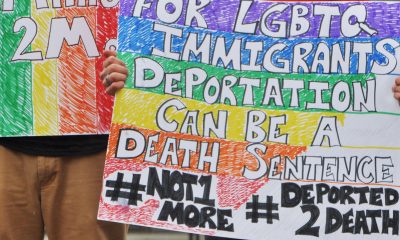homepage news
Activists in NM city rally around LGBT migrants
Las Cruces is less than 50 miles from US-Mexico border


LAS CRUCES, N.M. — Ivan, a 25-year-old gay man from Uganda, entered the U.S. on Christmas Day 2018 when he crossed the Rio Grande from Ciudad Juárez, Mexico, to El Paso, Texas.
Ivan told the Washington Blade during an interview at the offices of Alianza of New Mexico, a Las Cruces-based HIV/AIDS service organization, on July 15 that anti-gay discrimination and his family’s decision to reject him because of his sexual orientation prompted him to leave Uganda.
Ivan said he received a lawyer from Las Cruces when he was in U.S. Immigration and Customs Enforcement custody in El Paso. Ivan had a second lawyer after ICE transferred him to a detention center in Houston.
Ivan, who asked the Blade not to publish his last name or picture, said he won his asylum case on July 9. Ivan said a volunteer with Advocate Visitors with Immigrants in Detention (AVID) in the Chihuahuan Desert, a Las Cruces-based group that visits migrants who are in detention facilities, helped him get a bus ticket from Houston to Las Cruces where he currently lives with PFLAG Las Cruces President Ryan Steinmetz.
“It’s good, though a little bit hot,” said Ivan when the Blade asked whether he likes Las Cruces. The temperature in the city was over 100 degrees on July 15. “I’ve never been to such a hot climate.”
Las Cruces, which is in New Mexico’s Mesilla Valley through which the Rio Grande flows, is less than 50 miles north of El Paso and the U.S.-Mexico border. PFLAG Las Cruces is among the local advocacy groups that have begun to assist migrants.
Steinmetz said before the Blade interviewed Ivan that PFLAG Las Cruces’ Rainbow Refugee Project began after a local advocacy group asked for housing for two gay couples who ICE was going to release on bond.
“I first said that I can do this because I had the space in my house to be able to house them,” said Steinmetz. “But I went to PFLAG Las Cruces … and said I want to know if PFLAG is behind this and could support these gentlemen during their time here and they were.”
Steinmetz said PFLAG Las Cruces soon partnered with other Las Cruces-based organizations — NM Comunidades en Acción y de Fé and Border Servant Corps — and Peace Lutheran Church, an LGBT-affirming congregation in Las Cruces, and created a sponsorship package for the couples’ lawyer and the immigration judge who granted them bond.
“That was essentially what allowed for them to be released because so many of them did not get released,” Steinmetz told the Blade. “We were able to show that they had that community support, they had a place to go and they had an entire community that was wrapping their arms around them with other support services, and donations and things like that.”
Steinmetz said PFLAG Las Cruces’ Rainbow Immigration Project has worked with eight gay men from Guatemala, Honduras, El Salvador and Uganda who entered the U.S. from Ciudad Juárez.
Three of these men are from Guatemala, and were “severely discriminated against and abused for being gay,” according to Steinmetz. He told the Blade one of the men was in a coma for a month and lost sight in an eye after his stepfather beat him because he is gay.
Steinmetz said a group of criminals who “were trying to clean the streets of ‘drogadictos e homosexuales’ (drug addicts and homosexuals)” added the same man’s name to a list “to be taken care of.” Steinmetz told the Blade the man whose stepfather beat him, his partner and a handful of other gay men traveled through Mexico on a freight train known as “La Bestía” (the Beast) before they reached the U.S.-Mexico border.
Steinmetz said the men tried to cross a bridge from Ciudad Juárez to El Paso three times in order to ask for asylum, but U.S. officials denied their request, “saying that you Guatemalans, you have diseases, you’re not allowed to come in or whatever.” Steinmetz told the Blade they used a tunnel to cross the border and enter the U.S. in Sunland Park, N.M.
“They crossed in a way that was illegal for them to cross,” said Steinmetz. “But they felt they had no other options because they couldn’t return to where they were from. And they needed to ask for asylum.”
AVID has also worked with LGBT migrants.
Margaret Brown Vega and Nathan Craig, who volunteer with the organization, on July 15 during an interview at their Las Cruces home showed the Blade a picture they received from a gay asylum seeker who drew it when he was in solitary confinement at the Otero County Processing Center, an ICE detention facility in Chaparral, N.M., that the Management and Training Corporation, a company that operates prisons across the country, runs.
Craig said he and other AVID volunteers visited the man and three other gay men who ICE detained at the facility after they and a group of more than a dozen other LGBT migrants from Mexico and Central America asked for asylum in the U.S. in Nogales, Ariz., in 2017. Craig told the Blade two of the gay men, including the one who drew the picture, won their asylum cases and now live in New York.
“We’re very fond of him,” said Brown Vega.
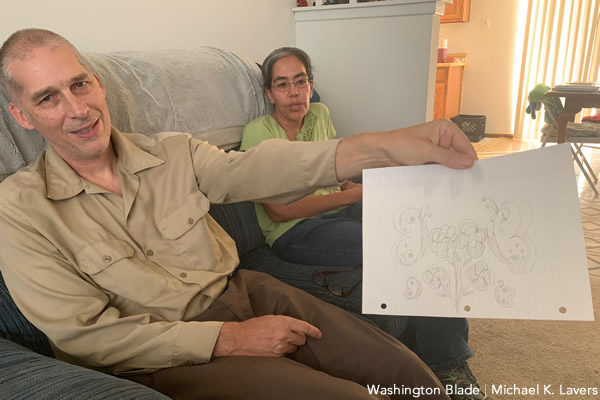
Brown Vega and Craig spoke with the Blade less than six weeks after Johana “Joa” Medina León, a transgender woman from El Salvador, died at El Paso’s Del Sol Medical Center three days after ICE released her from their custody.
Medina had been detained at the Otero County Processing Center.
Craig said he and other AVID volunteers visited one of Medina’s podmates “who was expressing concern for several weeks about Johana’s declining health.” Brown Vega told the Blade the three other trans women with whom Medina was detained found out she had died on the news.
“We go to the facility once a week and we knew we couldn’t get there beforehand,” said Brown Vega. “There’s no way to reach people in detention. You have to wait for them to reach out and we were concerned they were going to hear about it.”
“It was strange to us the facility staff didn’t bother to tell them,” she added. “They thought she was still in the facility, but in medical isolation because that’s why she was taken out from where they were at.”
The Blade on July 24 interviewed Medina’s mother, Patricia Medina de Barrientos, in the Salvadoran capital of San Salvador. Medina de Barrientos and her family have filed a wrongful death lawsuit against ICE and the Department of Homeland Security over Medina’s death.

The Blade’s visit to Las Cruces took place against the backdrop of continued outrage over President Trump’s hardline immigration policies, his racist and anti-immigrant rhetoric and the treatment of migrants in ICE custody.
The White House on July 15 announced it will end asylum protections for most migrants who arrive at the U.S.-Mexico border. Guatemalan President Jimmy Morales’ government less than two weeks later signed a “safe third country” agreement with the Trump administration that requires migrants who pass through Guatemala on their way to the U.S. to first seek asylum in the country.
The U.S. has forced thousands of asylum seekers to return to Ciudad Juárez and other Mexican border cities under the so-called Remain in Mexico program to await processing of their claims.
The American Civil Liberties Union of New Mexico, the Santa Fe Dreamers Project and Las Americas Immigrant Advocacy Center in a March 25 letter to ICE and the Department of Homeland Security said a dozen gay and trans detainees suffered “rampant sexual harassment, discrimination and abuse” at the Otero County Processing Center.
ICE in 2017 opened a unit for trans detainees at the Cibola County Correctional Center, a detention center in Milan, N.M., that CoreCivic, a private company that was once known as Corrections Corporation of America, operates.
The Blade is among the handful of media outlets that ICE invited to tour the unit on June 12. Trans Queer Pueblo, a Phoenix-based group that advocates on behalf of undocumented LGBT immigrants, on June 26 received a letter from 29 trans women at the Cibola County Correctional Center in which they complain about inadequate medical care and mistreatment from staff.
Massachusetts Congressman Joseph Kennedy in a letter he sent to Acting ICE Director Mark Morgan on June 27 demanded additional information about Medina’s death.
El Paso Matters President Bob Moore tweeted U.S. Sens. Martin Henrich (D-N.M.) and Tom Udall (D-N.M.) staffers on May 31 visited the Otero County Processing Center.
The tweet notes the staffers met with the facility’s warden, Ray Terry, and officials from ICE and Management and Training Corporation.
“Representatives from Sen. Udall and Sen. Heinrich’s staffs toured the Otero County Processing Center last Friday, May 31st, and held a meeting with the warden of the facility, as well as ICE officials and the individuals representing the independent contractor operating at the facility,” reads a statement from the senators’ spokespeople. “During their tour, representatives from Udall and Heinrich’s office (sic) raised concerns about the treatment and conditions for transgender and other LGBT individuals in detention at the facility.”
“At no point during the meeting did the OCPC (Otero County Processing Center) or ICE officials inform our staffs that a transgender individual who had been in U.S. custody had fallen ill, and was admitted to the hospital for treatment for serious medical issues,” adds the statement. “The senators believe that ICE should be fully transparent and publicly disclose all relevant information regarding this tragic and disturbing situation, and they continue to push for humane treatment for asylum seekers and for real solutions to this humanitarian crisis.”
NEW: Staffers for @MartinHeinrich and @tomudall met with ICE officials and warden of Otero County Processing Center on Friday to discuss treatment of transgender detainees. Officials never mentioned Johana, trans woman who fell ill 3 days earlier and died on Saturday. pic.twitter.com/T4UA4gsoU0
— Bob Moore (@BobMooreNews) June 4, 2019
“We were doing some thing to raise the alarm, but not enough,” Craig told the Blade as he and Brown Vega discussed Medina’s death and the circumstances that surround it. “We’ve certainly resolved ourselves to be much louder about those kinds of concerns since that took place.”
Craig said other trans women who are detained at the Otero County Processing Center have said they have been harassed after Medina’s death. Craig and Brown Vega also told the Blade the detainees have complained about a lack of access to hormones and food.
“They go to bed hungry,” said Brown Vega. “So, people just get used to being hungry all the time.”
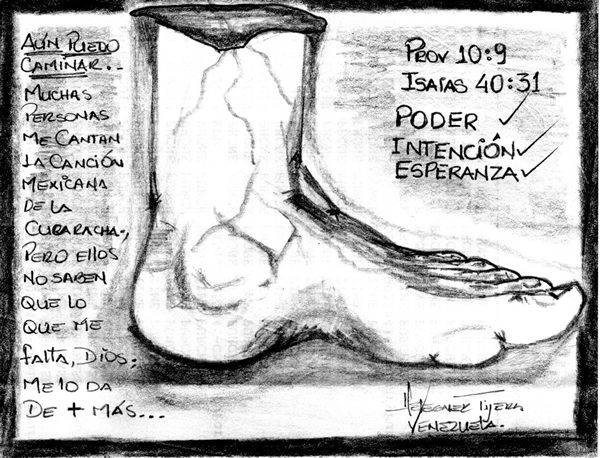
Ivan told the Blade he did not experience discrimination because of his sexual orientation when he was in ICE custody. Ivan did acknowledge trans people were separated from other detainees.
“I wasn’t discriminated against, though the discrimination I did see was the transgenders,” he said. “They are kept in the shoe.”
Ivan also told the Blade he wanted to study tourism in Uganda, but his family didn’t support his education “because I’m a homosexual.” He said he would like to return to school and travel to other parts of the U.S.
“You never know what comes around the way,” said Ivan. “I have a passion for traveling. I would like to go to other states and see how other people spend their time.”
homepage news
Honoring the legacy of New Orleans’ 1973 UpStairs Lounge fire
Why the arson attack that killed 32 gay men still resonates 50 years later
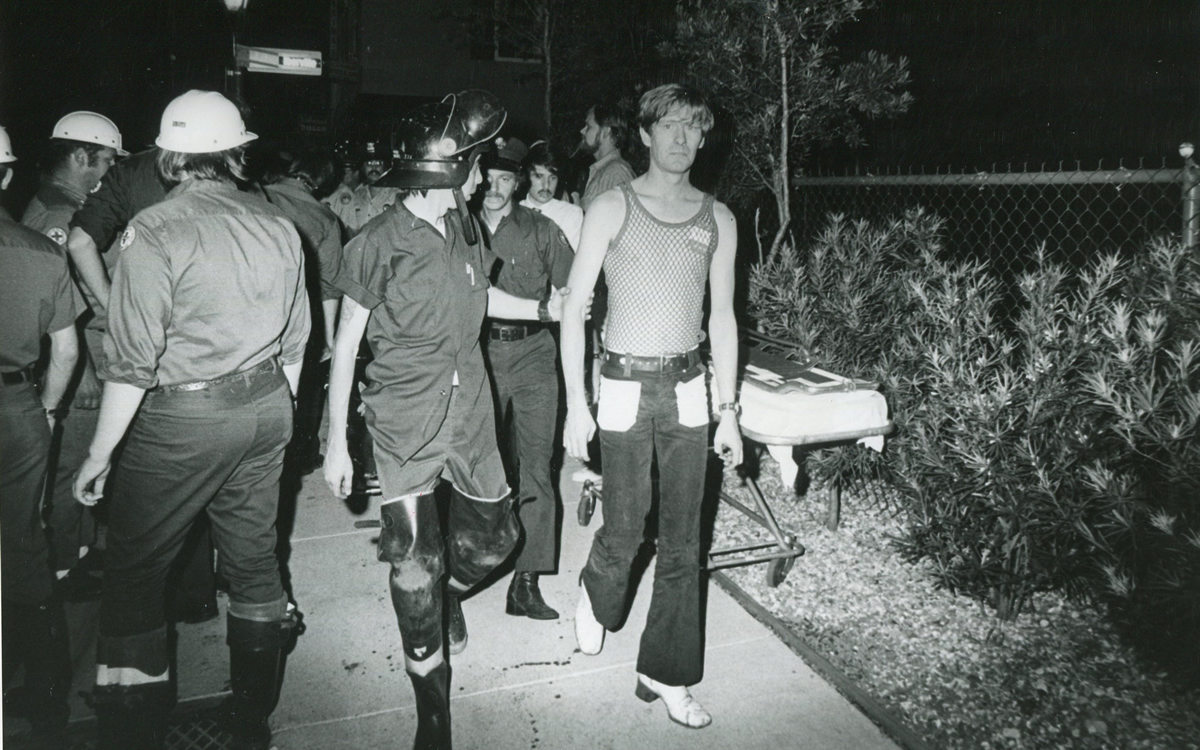
On June 23 of last year, I held the microphone as a gay man in the New Orleans City Council Chamber and related a lost piece of queer history to the seven council members. I told this story to disabuse all New Orleanians of the notion that silence and accommodation, in the face of institutional and official failures, are a path to healing.
The story I related to them began on a typical Sunday night at a second-story bar on the fringe of New Orleans’ French Quarter in 1973, where working-class men would gather around a white baby grand piano and belt out the lyrics to a song that was the anthem of their hidden community, “United We Stand” by the Brotherhood of Man.
“United we stand,” the men would sing together, “divided we fall” — the words epitomizing the ethos of their beloved UpStairs Lounge bar, an egalitarian free space that served as a forerunner to today’s queer safe havens.
Around that piano in the 1970s Deep South, gays and lesbians, white and Black queens, Christians and non-Christians, and even early gender minorities could cast aside the racism, sexism, and homophobia of the times to find acceptance and companionship for a moment.
For regulars, the UpStairs Lounge was a miracle, a small pocket of acceptance in a broader world where their very identities were illegal.
On the Sunday night of June 24, 1973, their voices were silenced in a murderous act of arson that claimed 32 lives and still stands as the deadliest fire in New Orleans history — and the worst mass killing of gays in 20th century America.
As 13 fire companies struggled to douse the inferno, police refused to question the chief suspect, even though gay witnesses identified and brought the soot-covered man to officers idly standing by. This suspect, an internally conflicted gay-for-pay sex worker named Rodger Dale Nunez, had been ejected from the UpStairs Lounge screaming the word “burn” minutes before, but New Orleans police rebuffed the testimony of fire survivors on the street and allowed Nunez to disappear.
As the fire raged, police denigrated the deceased to reporters on the street: “Some thieves hung out there, and you know this was a queer bar.”
For days afterward, the carnage met with official silence. With no local gay political leaders willing to step forward, national Gay Liberation-era figures like Rev. Troy Perry of the Metropolitan Community Church flew in to “help our bereaved brothers and sisters” — and shatter officialdom’s code of silence.
Perry broke local taboos by holding a press conference as an openly gay man. “It’s high time that you people, in New Orleans, Louisiana, got the message and joined the rest of the Union,” Perry said.
Two days later, on June 26, 1973, as families hesitated to step forward to identify their kin in the morgue, UpStairs Lounge owner Phil Esteve stood in his badly charred bar, the air still foul with death. He rebuffed attempts by Perry to turn the fire into a call for visibility and progress for homosexuals.
“This fire had very little to do with the gay movement or with anything gay,” Esteve told a reporter from The Philadelphia Inquirer. “I do not want my bar or this tragedy to be used to further any of their causes.”
Conspicuously, no photos of Esteve appeared in coverage of the UpStairs Lounge fire or its aftermath — and the bar owner also remained silent as he witnessed police looting the ashes of his business.
“Phil said the cash register, juke box, cigarette machine and some wallets had money removed,” recounted Esteve’s friend Bob McAnear, a former U.S. Customs officer. “Phil wouldn’t report it because, if he did, police would never allow him to operate a bar in New Orleans again.”
The next day, gay bar owners, incensed at declining gay bar traffic amid an atmosphere of anxiety, confronted Perry at a clandestine meeting. “How dare you hold your damn news conferences!” one business owner shouted.
Ignoring calls for gay self-censorship, Perry held a 250-person memorial for the fire victims the following Sunday, July 1, culminating in mourners defiantly marching out the front door of a French Quarter church into waiting news cameras. “Reverend Troy Perry awoke several sleeping giants, me being one of them,” recalled Charlene Schneider, a lesbian activist who walked out of that front door with Perry.
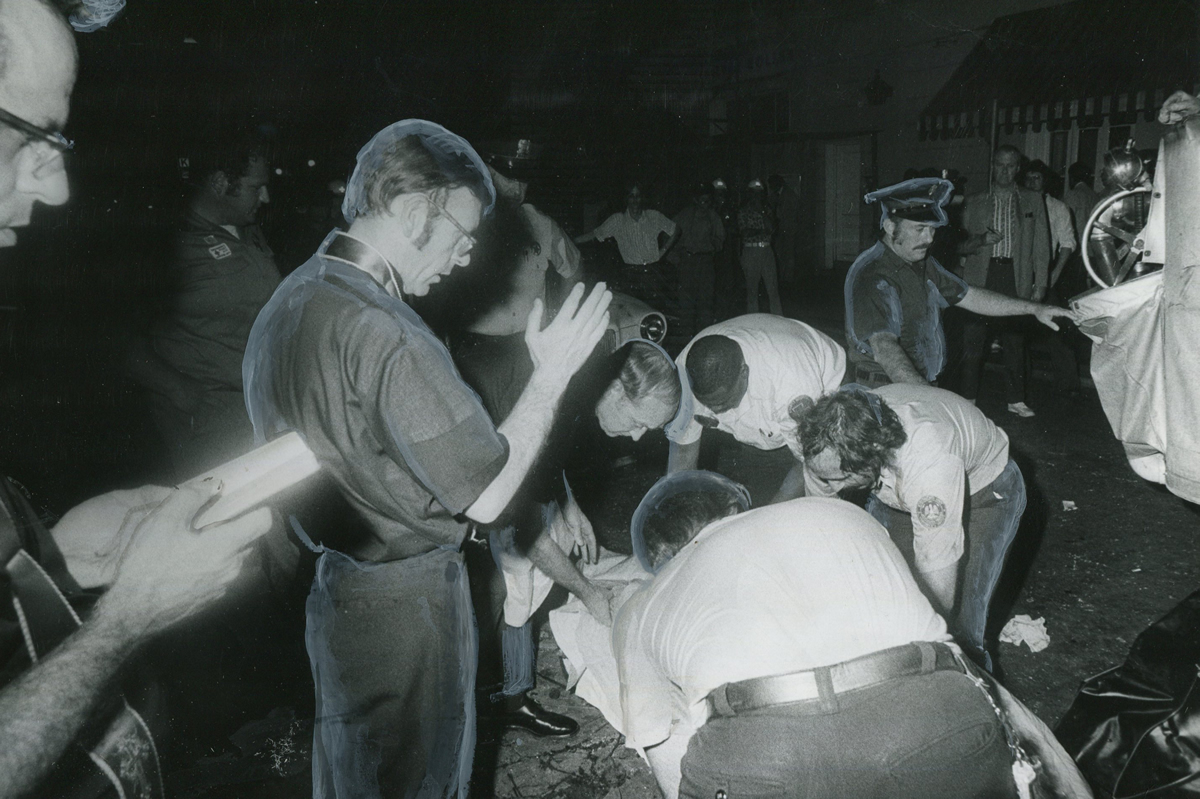
Esteve doubted the UpStairs Lounge story’s capacity to rouse gay political fervor. As the coroner buried four of his former patrons anonymously on the edge of town, Esteve quietly collected at least $25,000 in fire insurance proceeds. Less than a year later, he used the money to open another gay bar called the Post Office, where patrons of the UpStairs Lounge — some with visible burn scars — gathered but were discouraged from singing “United We Stand.”
New Orleans cops neglected to question the chief arson suspect and closed the investigation without answers in late August 1973. Gay elites in the city’s power structure began gaslighting the mourners who marched with Perry into the news cameras, casting suspicion on their memories and re-characterizing their moment of liberation as a stunt.
When a local gay journalist asked in April 1977, “Where are the gay activists in New Orleans?,” Esteve responded that there were none, because none were needed. “We don’t feel we’re discriminated against,” Esteve said. “New Orleans gays are different from gays anywhere else… Perhaps there is some correlation between the amount of gay activism in other cities and the degree of police harassment.”
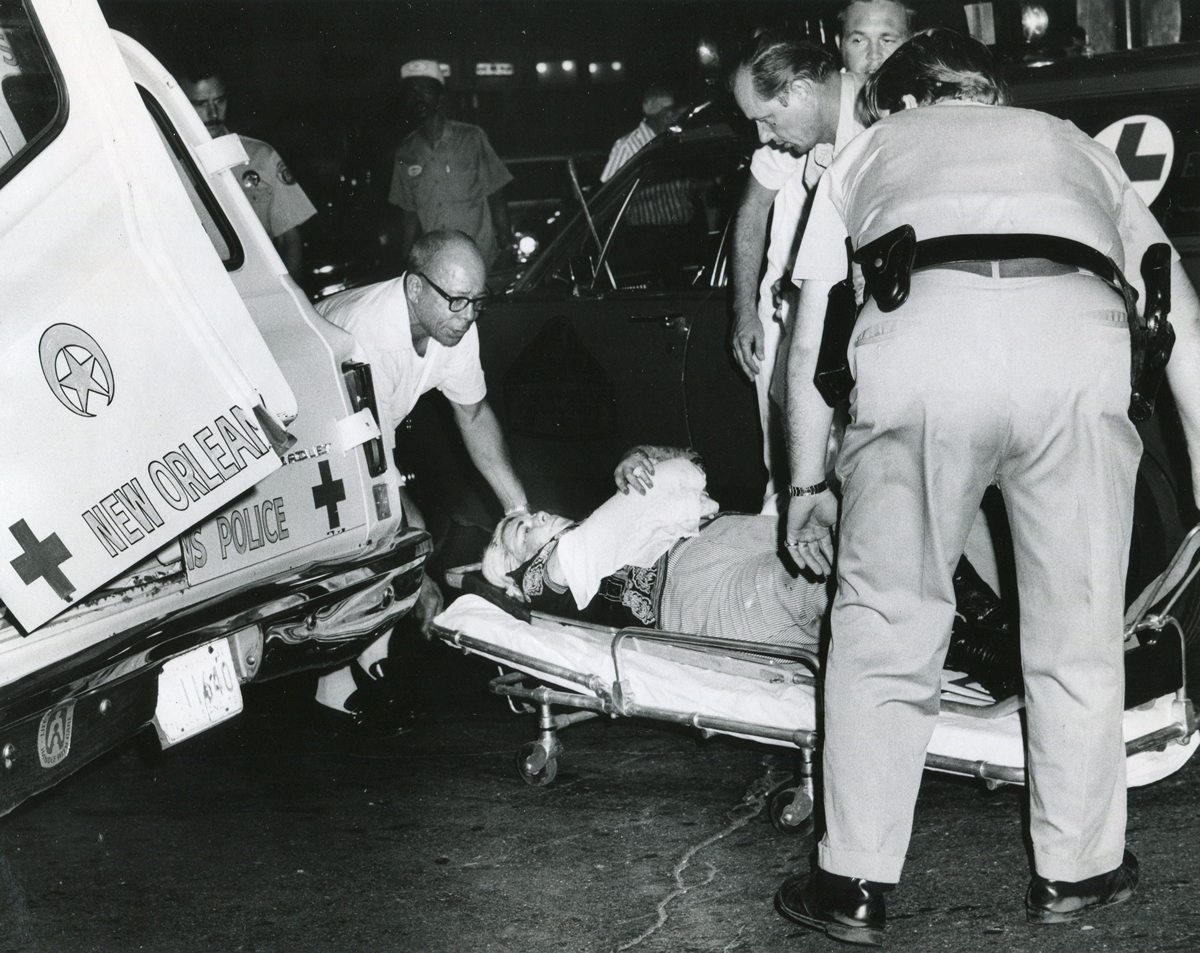
An attitude of nihilism and disavowal descended upon the memory of the UpStairs Lounge victims, goaded by Esteve and fellow gay entrepreneurs who earned their keep via gay patrons drowning their sorrows each night instead of protesting the injustices that kept them drinking.
Into the 1980s, the story of the UpStairs Lounge all but vanished from conversation — with the exception of a few sanctuaries for gay political debate such as the local lesbian bar Charlene’s, run by the activist Charlene Schneider.
By 1988, the 15th anniversary of the fire, the UpStairs Lounge narrative comprised little more than a call for better fire codes and indoor sprinklers. UpStairs Lounge survivor Stewart Butler summed it up: “A tragedy that, as far as I know, no good came of.”
Finally, in 1991, at Stewart Butler and Charlene Schneider’s nudging, the UpStairs Lounge story became aligned with the crusade of liberated gays and lesbians seeking equal rights in Louisiana. The halls of power responded with intermittent progress. The New Orleans City Council, horrified by the story but not yet ready to take its look in the mirror, enacted an anti-discrimination ordinance protecting gays and lesbians in housing, employment, and public accommodations that Dec. 12 — more than 18 years after the fire.
“I believe the fire was the catalyst for the anger to bring us all to the table,” Schneider told The Times-Picayune, a tacit rebuke to Esteve’s strategy of silent accommodation. Even Esteve seemed to change his stance with time, granting a full interview with the first UpStairs Lounge scholar Johnny Townsend sometime around 1989.
Most of the figures in this historic tale are now deceased. What’s left is an enduring story that refused to go gently. The story now echoes around the world — a musical about the UpStairs Lounge fire recently played in Tokyo, translating the gay underworld of the 1973 French Quarter for Japanese audiences.
When I finished my presentation to the City Council last June, I looked up to see the seven council members in tears. Unanimously, they approved a resolution acknowledging the historic failures of city leaders in the wake of the UpStairs Lounge fire.
Council members personally apologized to UpStairs Lounge families and survivors seated in the chamber in a symbolic act that, though it could not bring back those who died, still mattered greatly to those whose pain had been denied, leaving them to grieve alone. At long last, official silence and indifference gave way to heartfelt words of healing.
The way Americans remember the past is an active, ongoing process. Our collective memory is malleable, but it matters because it speaks volumes about our maturity as a people, how we acknowledge the past’s influence in our lives, and how it shapes the examples we set for our youth. Do we grapple with difficult truths, or do we duck accountability by defaulting to nostalgia and bluster? Or worse, do we simply ignore the past until it fades into a black hole of ignorance and indifference?
I believe that a factual retelling of the UpStairs Lounge tragedy — and how, 50 years onward, it became known internationally — resonates beyond our current divides. It reminds queer and non-queer Americans that ignoring the past holds back the present, and that silence is no cure for what ails a participatory nation.
Silence isolates. Silence gaslights and shrouds. It preserves the power structures that scapegoat the disempowered.
Solidarity, on the other hand, unites. Solidarity illuminates a path forward together. Above all, solidarity transforms the downtrodden into a resounding chorus of citizens — in the spirit of voices who once gathered ‘round a white baby grand piano and sang, joyfully and loudly, “United We Stand.”

Robert W. Fieseler is a New Orleans-based journalist and the author of “Tinderbox: the Untold Story of the Up Stairs Lounge Fire and the Rise of Gay Liberation.”
homepage news
New Supreme Court term includes critical LGBTQ case with ‘terrifying’ consequences
Business owner seeks to decline services for same-sex weddings
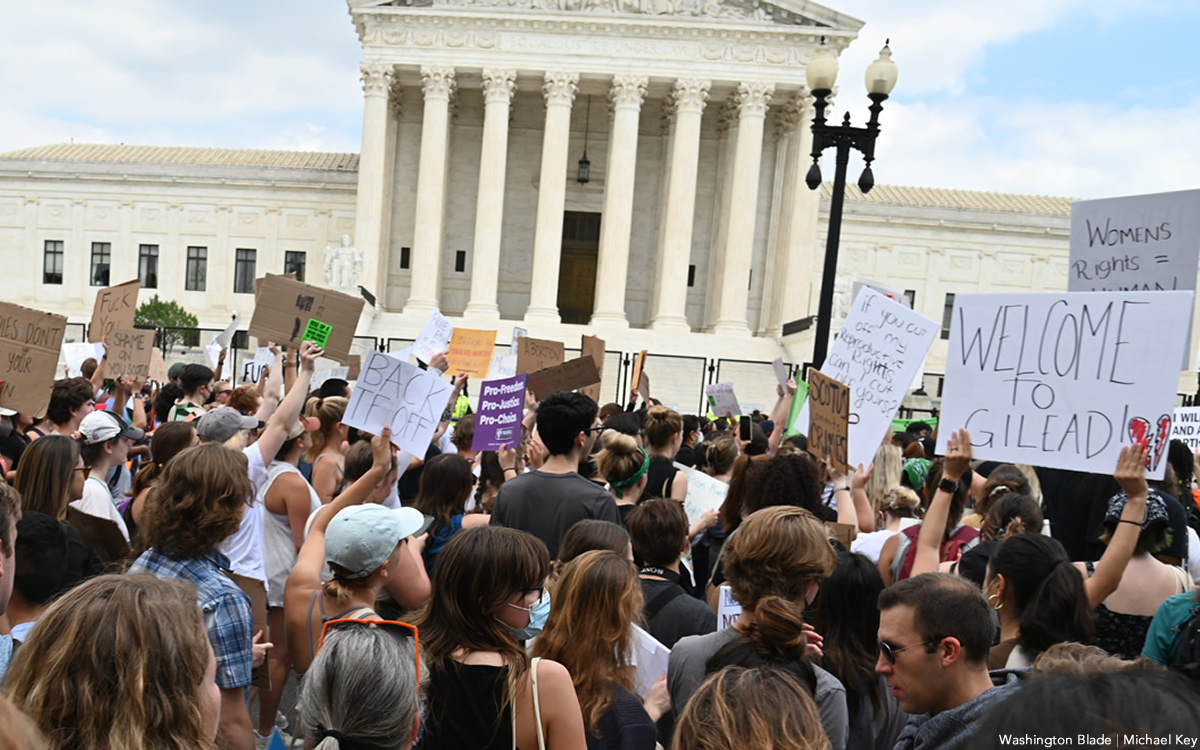
The U.S. Supreme Court, after a decision overturning Roe v. Wade that still leaves many reeling, is starting a new term with justices slated to revisit the issue of LGBTQ rights.
In 303 Creative v. Elenis, the court will return to the issue of whether or not providers of custom-made goods can refuse service to LGBTQ customers on First Amendment grounds. In this case, the business owner is Lorie Smith, a website designer in Colorado who wants to opt out of providing her graphic design services for same-sex weddings despite the civil rights law in her state.
Jennifer Pizer, acting chief legal officer of Lambda Legal, said in an interview with the Blade, “it’s not too much to say an immeasurably huge amount is at stake” for LGBTQ people depending on the outcome of the case.
“This contrived idea that making custom goods, or offering a custom service, somehow tacitly conveys an endorsement of the person — if that were to be accepted, that would be a profound change in the law,” Pizer said. “And the stakes are very high because there are no practical, obvious, principled ways to limit that kind of an exception, and if the law isn’t clear in this regard, then the people who are at risk of experiencing discrimination have no security, no effective protection by having a non-discrimination laws, because at any moment, as one makes their way through the commercial marketplace, you don’t know whether a particular business person is going to refuse to serve you.”
The upcoming arguments and decision in the 303 Creative case mark a return to LGBTQ rights for the Supreme Court, which had no lawsuit to directly address the issue in its previous term, although many argued the Dobbs decision put LGBTQ rights in peril and threatened access to abortion for LGBTQ people.
And yet, the 303 Creative case is similar to other cases the Supreme Court has previously heard on the providers of services seeking the right to deny services based on First Amendment grounds, such as Masterpiece Cakeshop and Fulton v. City of Philadelphia. In both of those cases, however, the court issued narrow rulings on the facts of litigation, declining to issue sweeping rulings either upholding non-discrimination principles or First Amendment exemptions.
Pizer, who signed one of the friend-of-the-court briefs in opposition to 303 Creative, said the case is “similar in the goals” of the Masterpiece Cakeshop litigation on the basis they both seek exemptions to the same non-discrimination law that governs their business, the Colorado Anti-Discrimination Act, or CADA, and seek “to further the social and political argument that they should be free to refuse same-sex couples or LGBTQ people in particular.”
“So there’s the legal goal, and it connects to the social and political goals and in that sense, it’s the same as Masterpiece,” Pizer said. “And so there are multiple problems with it again, as a legal matter, but also as a social matter, because as with the religion argument, it flows from the idea that having something to do with us is endorsing us.”
One difference: the Masterpiece Cakeshop litigation stemmed from an act of refusal of service after owner, Jack Phillips, declined to make a custom-made wedding cake for a same-sex couple for their upcoming wedding. No act of discrimination in the past, however, is present in the 303 Creative case. The owner seeks to put on her website a disclaimer she won’t provide services for same-sex weddings, signaling an intent to discriminate against same-sex couples rather than having done so.
As such, expect issues of standing — whether or not either party is personally aggrieved and able bring to a lawsuit — to be hashed out in arguments as well as whether the litigation is ripe for review as justices consider the case. It’s not hard to see U.S. Chief Justice John Roberts, who has sought to lead the court to reach less sweeping decisions (sometimes successfully, and sometimes in the Dobbs case not successfully) to push for a decision along these lines.
Another key difference: The 303 Creative case hinges on the argument of freedom of speech as opposed to the two-fold argument of freedom of speech and freedom of religious exercise in the Masterpiece Cakeshop litigation. Although 303 Creative requested in its petition to the Supreme Court review of both issues of speech and religion, justices elected only to take up the issue of free speech in granting a writ of certiorari (or agreement to take up a case). Justices also declined to accept another question in the petition request of review of the 1990 precedent in Smith v. Employment Division, which concluded states can enforce neutral generally applicable laws on citizens with religious objections without violating the First Amendment.
Representing 303 Creative in the lawsuit is Alliance Defending Freedom, a law firm that has sought to undermine civil rights laws for LGBTQ people with litigation seeking exemptions based on the First Amendment, such as the Masterpiece Cakeshop case.
Kristen Waggoner, president of Alliance Defending Freedom, wrote in a Sept. 12 legal brief signed by her and other attorneys that a decision in favor of 303 Creative boils down to a clear-cut violation of the First Amendment.
“Colorado and the United States still contend that CADA only regulates sales transactions,” the brief says. “But their cases do not apply because they involve non-expressive activities: selling BBQ, firing employees, restricting school attendance, limiting club memberships, and providing room access. Colorado’s own cases agree that the government may not use public-accommodation laws to affect a commercial actor’s speech.”
Pizer, however, pushed back strongly on the idea a decision in favor of 303 Creative would be as focused as Alliance Defending Freedom purports it would be, arguing it could open the door to widespread discrimination against LGBTQ people.
“One way to put it is art tends to be in the eye of the beholder,” Pizer said. “Is something of a craft, or is it art? I feel like I’m channeling Lily Tomlin. Remember ‘soup and art’? We have had an understanding that whether something is beautiful or not is not the determining factor about whether something is protected as artistic expression. There’s a legal test that recognizes if this is speech, whose speech is it, whose message is it? Would anyone who was hearing the speech or seeing the message understand it to be the message of the customer or of the merchants or craftsmen or business person?”
Despite the implications in the case for LGBTQ rights, 303 Creative may have supporters among LGBTQ people who consider themselves proponents of free speech.
One joint friend-of-the-court brief before the Supreme Court, written by Dale Carpenter, a law professor at Southern Methodist University who’s written in favor of LGBTQ rights, and Eugene Volokh, a First Amendment legal scholar at the University of California, Los Angeles, argues the case is an opportunity to affirm the First Amendment applies to goods and services that are uniquely expressive.
“Distinguishing expressive from non-expressive products in some contexts might be hard, but the Tenth Circuit agreed that Smith’s product does not present a hard case,” the brief says. “Yet that court (and Colorado) declined to recognize any exemption for products constituting speech. The Tenth Circuit has effectively recognized a state interest in subjecting the creation of speech itself to antidiscrimination laws.”
Oral arguments in the case aren’t yet set, but may be announced soon. Set to defend the state of Colorado and enforcement of its non-discrimination law in the case is Colorado Solicitor General Eric Reuel Olson. Just this week, the U.S. Supreme Court announced it would grant the request to the U.S. solicitor general to present arguments before the justices on behalf of the Biden administration.
With a 6-3 conservative majority on the court that has recently scrapped the super-precedent guaranteeing the right to abortion, supporters of LGBTQ rights may think the outcome of the case is all but lost, especially amid widespread fears same-sex marriage would be next on the chopping block. After the U.S. Tenth Circuit Court of Appeals ruled against 303 Creative in the lawsuit, the simple action by the Supreme Court to grant review in the lawsuit suggests they are primed to issue a reversal and rule in favor of the company.
Pizer, acknowledging the call to action issued by LGBTQ groups in the aftermath of the Dobbs decision, conceded the current Supreme Court issuing the ruling in this case is “a terrifying prospect,” but cautioned the issue isn’t so much the makeup of the court but whether or not justices will continue down the path of abolishing case law.
“I think the question that we’re facing with respect to all of the cases or at least many of the cases that are in front of the court right now, is whether this court is going to continue on this radical sort of wrecking ball to the edifice of settled law and seemingly a goal of setting up whole new structures of what our basic legal principles are going to be. Are we going to have another term of that?” Pizer said. “And if so, that’s terrifying.”
homepage news
Kelley Robinson, a Black, queer woman, named president of Human Rights Campaign
Progressive activist a veteran of Planned Parenthood Action Fund
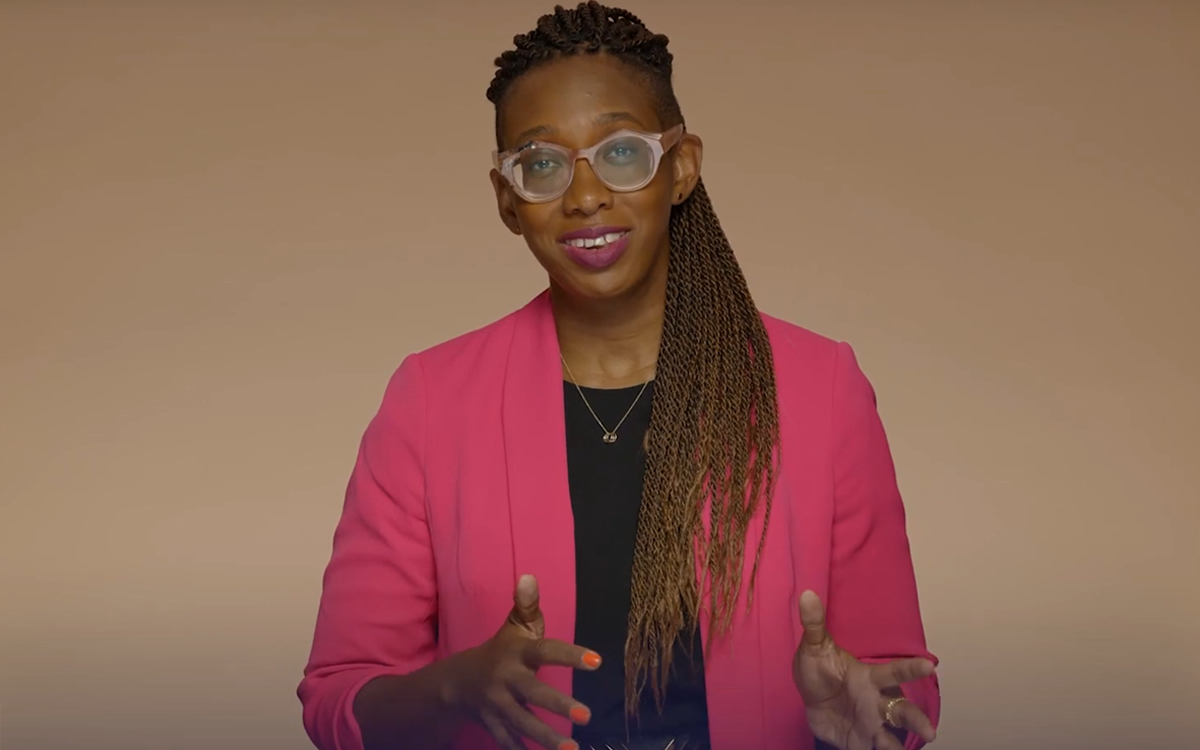
Kelley Robinson, a Black, queer woman and veteran of Planned Parenthood Action Fund, is to become the next president of the Human Rights Campaign, the nation’s leading LGBTQ group announced on Tuesday.
Robinson is set to become the ninth president of the Human Rights Campaign after having served as executive director of Planned Parenthood Action Fund and more than 12 years of experience as a leader in the progressive movement. She’ll be the first Black, queer woman to serve in that role.
“I’m honored and ready to lead HRC — and our more than three million member-advocates — as we continue working to achieve equality and liberation for all Lesbian, Gay, Bisexual, Transgender, and Queer people,” Robinson said. “This is a pivotal moment in our movement for equality for LGBTQ+ people. We, particularly our trans and BIPOC communities, are quite literally in the fight for our lives and facing unprecedented threats that seek to destroy us.”
The next Human Rights Campaign president is named as Democrats are performing well in polls in the mid-term elections after the U.S. Supreme Court overturned Roe v. Wade, leaving an opening for the LGBTQ group to play a key role amid fears LGBTQ rights are next on the chopping block.
“The overturning of Roe v. Wade reminds us we are just one Supreme Court decision away from losing fundamental freedoms including the freedom to marry, voting rights, and privacy,” Robinson said. “We are facing a generational opportunity to rise to these challenges and create real, sustainable change. I believe that working together this change is possible right now. This next chapter of the Human Rights Campaign is about getting to freedom and liberation without any exceptions — and today I am making a promise and commitment to carry this work forward.”
The Human Rights Campaign announces its next president after a nearly year-long search process after the board of directors terminated its former president Alphonso David when he was ensnared in the sexual misconduct scandal that led former New York Gov. Andrew Cuomo to resign. David has denied wrongdoing and filed a lawsuit against the LGBTQ group alleging racial discrimination.
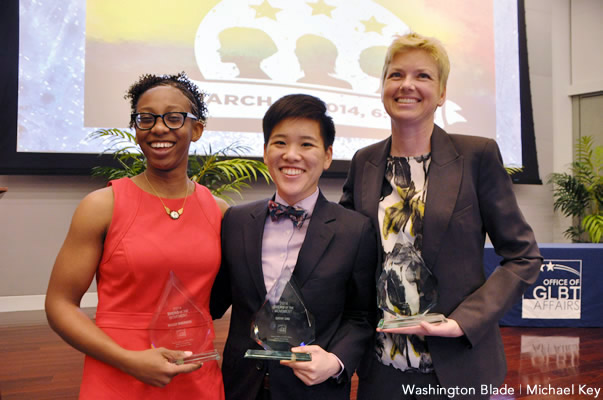
-

 Federal Government2 days ago
Federal Government2 days agoTreasury Department has a gay secretary but LGBTQ staff are under siege
-

 Virginia3 days ago
Virginia3 days agoDefying trends, new LGBTQ center opens in rural Winchester, Va.
-
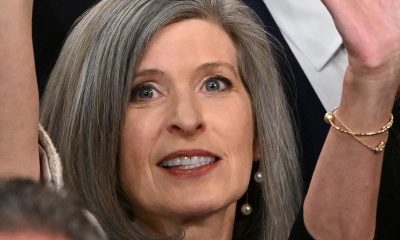
 District of Columbia2 days ago
District of Columbia2 days agoGay GOP group hosts Ernst, 3 House members — all of whom oppose Equality Act
-
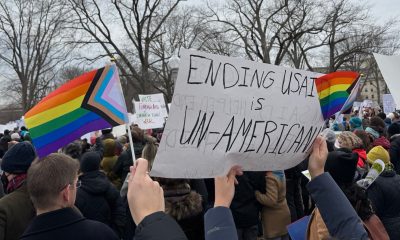
 Opinions4 days ago
Opinions4 days agoUSAID’s demise: America’s global betrayal of trust with LGBTQ people

